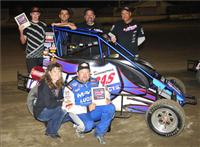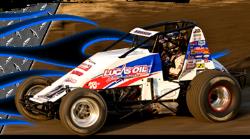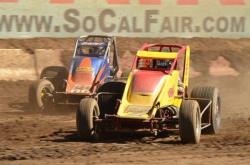Broken U-Joint Stops Kruseman’s Attempt to Win Third Chili Bowl
- Feb 3, 2017
Kruseman has been racing the Chili Bowl since 1999 when he came in second. He won the Chili Bowl Championship in 2000 and 2004. He was the preliminary night Chili Bowl winner in 2005, 2006, 2010, and 2012. The River Spirit Expo Center at Expo Square in Tulsa, Oklahoma, was the site for the event, which was held on Tuesday, January 10 through Saturday, January 14, 2017. A record 372 drivers from 36 states and five countries including the United States, Australia, England, Canada, and New Zealand competed. The Chili Bowl Midget Nationals, which NASCAR has called the “biggest Midget race of the year” and is nicknamed the “Super Bowl” of midget racing, was started in 1987. Each night of the five-day event has qualifying races presenting winners with the ultimate chance to qualify for the A-main event. Each qualifying night has heat races, dash-type races and a 25-lap feature race. Drivers who finish poorly in their heat start deep in final night qualifying events and have to finish high in many events to make the A-main event. A driver who started in the lowest “J” event would have to finish high in heats I, H, G, F, E, D, C, and B to reach the A-main event. The top four finishers in the qualifying night’s feature event and the top four finishers of the two Saturday night B-main event go on to compete in the feature A-main event to determine the winner. Kruseman started in the C main and was successful in his transfer to the B heat when his car suffered the broken U-Joint. Racing History
He started racing go karts and steadily graduated to USAC three-quarter midgets, midgets, and sprint cars. Besides winning the Chili Bowl twice, he has won the Non-Winged World Championship, the Western States Dirt Track Championship, ESPN Points Series, the TQ Midget Fall Nationals Championship, the USAC Indiana Sprint Week Championship twice, the 2001 SCRA Championship, 2006 USAC/CRA Championship, 2011 VRA Midget Championship, 2011 USAC Western Midget Championship. He finished second in the Australian Grand Prix in 2001, won three Australian Championships in 2003, and won six of nine events at “Le Midget Grand Prix” in Paris, France in 1994. When asked how many wins he’s had in his career, Kruseman laughed and noted that he hasn’t kept track. “But one guy told me I had 167 wins in just sprint and midgets,” he said. He identified his major victories as his two Chili Bowl wins, a world championship win, winning the USAC Championship three times and winning the Oval Nationals, the biggest sprint race of the year. For 13 years in a row Kruseman has raced in New Zealand and Australia in the winter and all over the United States in the summer. Currently, he competes in about 15 races a year. Race Car Driving School He started the Cory Kruseman Sprint Car Driving School in Ventura, California, in 1999.
People learn about the school through word of mouth. “If you are in the business, you know who we are,” he said. “USA Today just listed us as one of the top 10 schools in the United States.” There is no classroom work involved in the course. Instead, it is all hands on. The students drive sprint cars, which have one seat, and there is no communication between them and the instructors. “They’re on their own,” Kruseman said. The class includes an Arrive and Race Series. “People lease cars from us. They go through the school and learn how to drive, then we take them to a nearby race track where they race,” he said. “Those who participate in the program are responsible for the car they lease. They have to pay for any car they tear up. We offer insurance for the school, but not for racing,” Kruseman said. “We don’t put anyone out in a race who we don’t think is safe and in control. Still, so far as racing experience, some have very little,” he said. The school uses sprint and midget sprint cars. The sprint cars have a wheelbase of 86-inches and are 76-inches wide and include a 700-horsepower engine that is naturally aspirated. Their top speed was clocked at 98 mph at the Ventura Raceway. The midget sprint cars have a Ford Focus 2.0-liter engine that produces 190 horsepower, has a 72-inch wheelbase and is 65-inches wide. Their top speed has been clocked at 84 mph at the Ventura Raceway. Kruseman uses K&N air, oil, and fuel filters in his personal racecar, the school’s cars, his daily driver, and his motorhome. “We use them because hands down they’re the best product out there,” said Kruseman. “They are an advantage. Even if they cost more money, I would still be running them.” His sponsors/partners include: • Lucas Oil Products • MAV TV • Schoenfeld Headers • Auto Meter • Sander Engineering • Barnes Dry Sump Oil Systems • Automotive Racing Products • KSE Racing Products • K&N Engineering • Fuel Safe Racing Cells • Impact • Ventura Raceway • Circle Track Performance • Extreme Technologies Mufflers • Kenny’s Components • Maxwell Industries • Elliott Brand Web Design • Brown & Miller Racing Solutions • PXP RaceWear • FK Bearings • Odyssey Battery | ||||
| | ||||
| ||||
| | ||||












